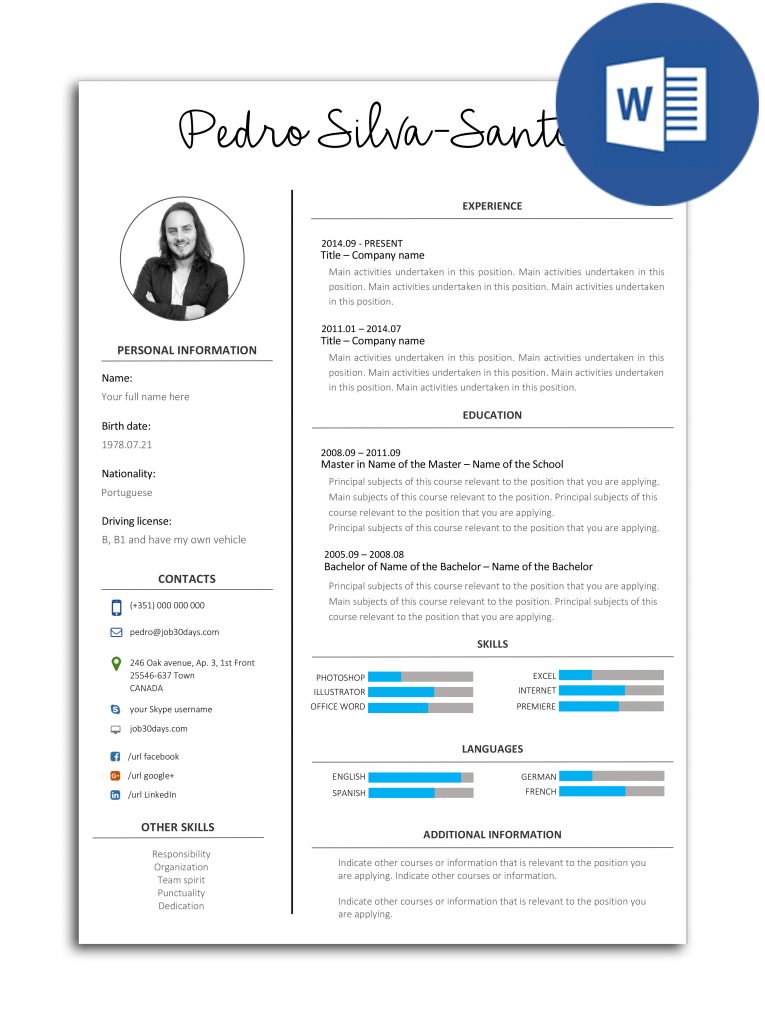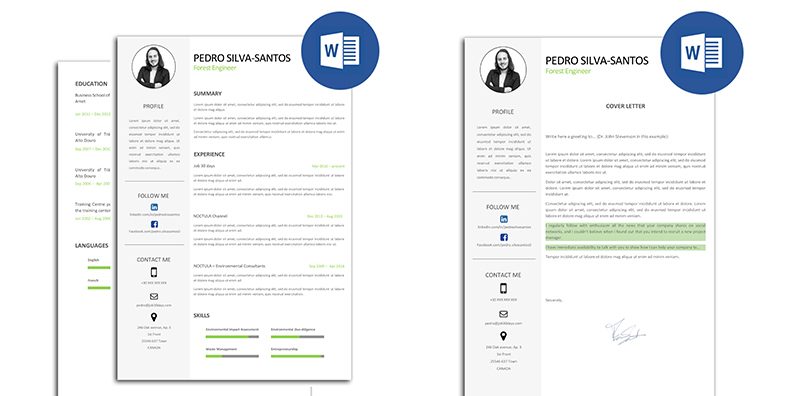Successful candidates keep up to date with the latest trends in writing CVs.
All employers want to hire proactive, dynamic people.
An old fashioned CV reflects a boring personality, while a modern CV reflects a dynamic personality. An old-fashioned CV makes you look boring, but a modern-looking CV will help you to come across as dynamic.
The job market is constantly evolving, therefore, the ideal Curriculum Vitae will change completely every two years. A decade ago, CVs were long and unstructured. Nowadays a CV must be seen as the candidate’s publicity.
4 Tips for an impressive CV:
1 – Simplicity
Use a simple structure and a font which is easy to read.
2 – Purpose
While you’re writing your CV, keep your goal in mind: to get a job interview.
This will make sure you write in a captivating way.
3 – The best is at the top
The most relevant points must be at the beginning of each section, so it serves as “bait” for the recruiter.
4 – Adapted to digital
We are in the digital era and therefore the paper CVs are about to become obsolete.
Turn your CV into a PDF document to guarantee that the employer sees all the information exactly the way you formatted it.
You can also put the URL of your LinkedIn profile or of a website where there’s information about a relevant project that you have done.
4 Common CV errors:
1 –Personal information is missing or it takes up too much space.
Your name and the contact details (email address and mobile number) should be at the top of the page
2 – Secondary school
There’s no place for secondary school experience in your professional CV. The only exception to this rule is if you have attended a specific school which is relevant for the job that you are applying for.
3 – Irrelevant experience
Any professional experience must be relevant for the position for which you are applying.
Professional experience more than a decade old is no longer suitable for an application.
4 – Spelling errors
If an employer finds spelling errors in a CV, they will conclude that you did not care enough to write it carefully and you didn’t bother to do a final revision.
To avoid this mistake, ask a friend to read your CV before you send it to anyone.
Careful:
When you send an email to a company, whether respond to a job advert or when sending your CV to various companies, remember that the email address you use must be normal and generic, for example patrick.greenleaf@gmail.com.
Besides that, make sure that your name, Patrick Greenleaf, appears in the inbox of the recruiter, instead of your nickname “Paddywhack”, or something similar.
To stand out from the crowd of people looking for work, choose one of these original CV models.
Sources: Michelle Joseph, Stacie Renna, Chris Boone, Danny Rubin

















